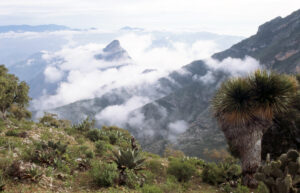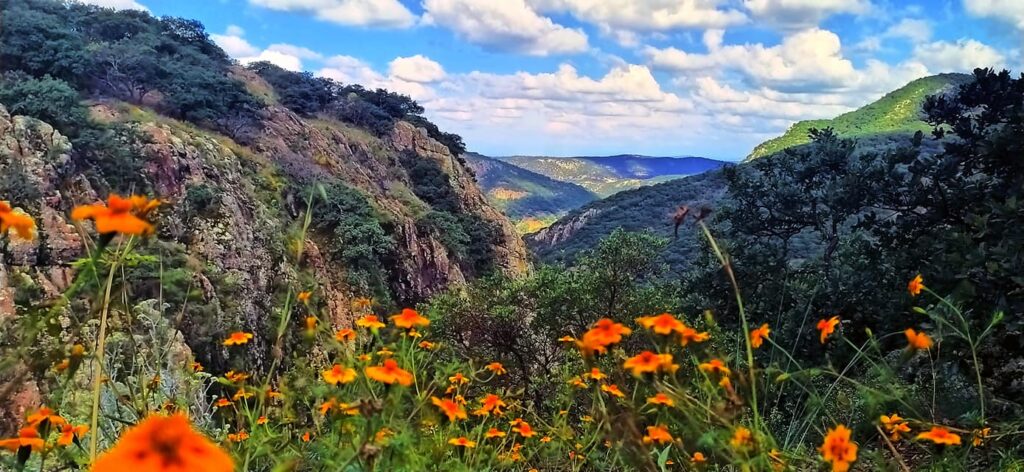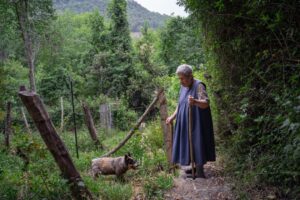The Sierra Gorda is a natural area that within its approximately 380,000 hectares of surface area within the state of Querétaro is home to more than 5,000 species of plants and animals, including some endangered species such as the jaguar.
Mountains exceeding 3,000 meters in altitude, rivers, jungles, semi-arid deserts and cloud forests can be found in the Sierra Gorda. Unesco decreed it as Biosphere Reserve and named it as Mexico's green jewel.
However, a few decades ago, this lung of central Mexico was at the mercy of development derived from road construction, logging and economic activities such as cattle ranching.
Martha Isabel "Pati" Ruiz Corzoa teacher who was in love with the natural landscapes and wildlife offered by this place, changed her place of residence to the Sierra Gorda and launched a citizens' movement that has been protecting this area, one of the most ecologically diverse in Mexico, for the past 40 years. UN Environment.
"That natural world that we all had contact with, I was fortunate enough to have had contact with, we've already lost. So what is left for me is sacred. I believe that our society must connect with the nature that is and that keeps us as a loving mother," says Pati Ruiz,
An example of community work
When Pati Ruiz moved in 1980 to the Siera GordaShe realized that what was once pristine wilderness was being filled with roads, garbage dumps and logging operations, which prompted her to found the Sierra Gorda Ecological Group with her husband and neighbors in the area.
It was thanks to the efforts of this community organization that Sierra Gorda was declared a protected area by the federal government of Mexico in 1997, and later, in 2001, Unesco named it a protected area. Biosphere Reserve.
Much of the success of Sierra Gorda is due to the "conservation economy" that Pati Ruiz and Grupo Ecológico have built. Today, the reserve is home to 100,000 people, many of whom derive at least part of their income from ecotourism and forest restoration, while helping to counteract the climate change.

Landowners within the reserve receive compensation for allowing the forest to grow wild. This income replaces the profit they would make from cattle ranching and logging.
Removing livestock from land can help restore forests, since each hectare in the wild can absorb approximately four tons of carbon dioxide per year, a gas that causes global warming, notes Grupo Ecológico.
Compensation for CO2 capture
With the collaboration of the government of the State of Querétaro and World Land TrustIn addition, Grupo Ecológico developed a carbon footprint program financed with state resources.
"Biodiverse Carbon". is a forest protection project through the Carbon Balanced. Under the program, vehicle owners in Querétaro pay a small tax along with the renewal fee for their license plates each year. Businesses and industries established in Querétaro also pay a tax on their vehicles. carbon emissions.

A portion of the proceeds from these taxes goes to landowners in the region. Sierra Gorda to compensate them for conserving their land, allowing a considerable variety of plants and animals to return and recover.
Grupo Ecológico has been responsible for coordinating the only Mexican climate change mitigation and adaptation initiative focused exclusively on forest and soil restoration.
"We work hand in hand with the State Government. We have developed tools, strategies, climate action guides," Pati Ruiz emphasizes.
Other projects include support for beekeeping, training in ecosystem conservation and community tourism.
Within the Kunming-Montreal Global Biodiversity Frameworksigned in 2022 to halt and reverse the loss of nature, one of the objectives is the sustainable management and use of biodiversity. The plan includes bringing 30% of the planet and 30% of degraded ecosystems under protection by 2030.
In the Sierra GordaThe inhabitants do their part and demonstrate that it is possible to achieve the conservation and restoration of our ecosystems, and to live in harmony with nature and its resources.
Source: UN Environment



